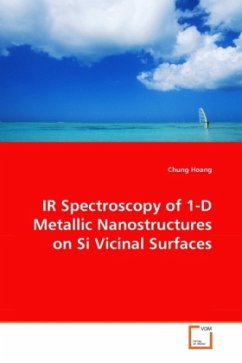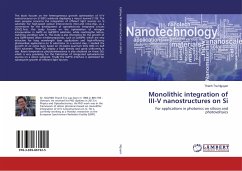Vicinal Si(111) surfaces are used as templates for the growth of Pb nanowires as well as Au and In atom chains. The morphology of the Au atom chains was studied by use of STM and RHEED. The In chains were investigated by infrared spectroscopy with the electrical field component of the IR light polarized either parallel or perpendicular to the wires. It is shown that at room temperature, In chains display a plasmonic absorption feature along the chain but not in the perpendicular direction. Furthermore, upon cooling down to liquid nitrogen temperature, a metal to insulator transition is observed. A structural distortion is also confirmed by RHEED. As for the result of Pb nanowires, by means of IRS, it is now possible to control the average length of parallel nanowire arrays by monitoring four experimental parameters that influence on the nucleation density; namely:Pb coverage, evaporation rate, substrate temperature and the surface itself. The system shows an enhancement of the absorption at the antenna frequency in the low temperature regime. This scenario is assigned to the reduction of electron-phonon scattering due to low temperature.








